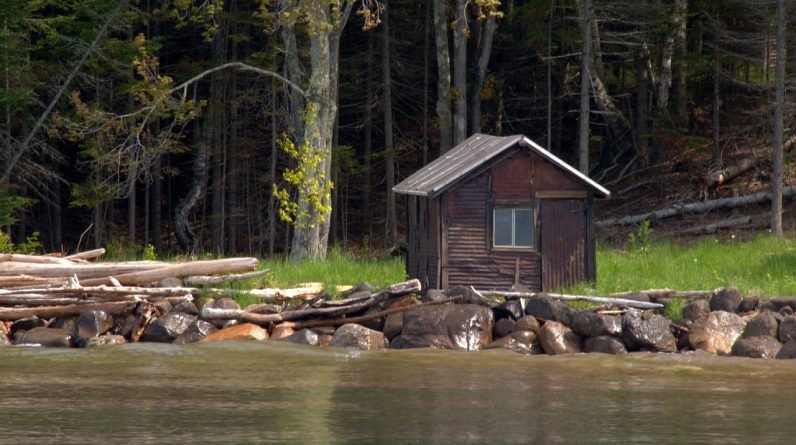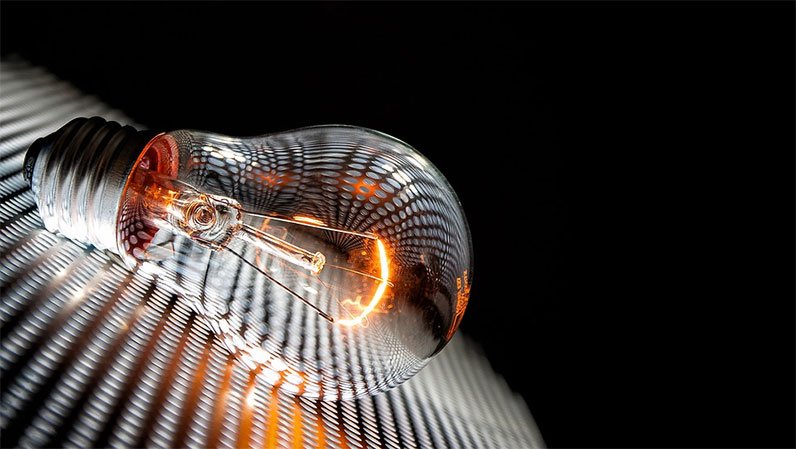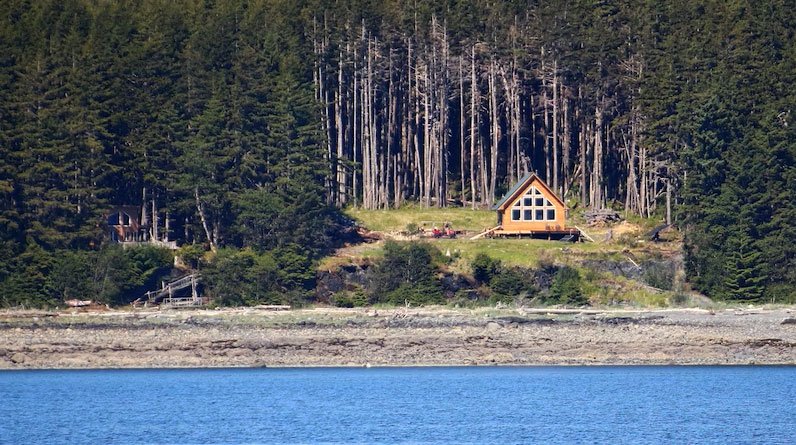
What is the smallest size of tiny house that would be comfortable for off-grid living?
There is no one definitive answer to this question since different people have different preferences and needs. However, a good starting point might be the size of a typical RV or camper, which is typically around 30 feet long and 10 feet wide. For Rob Greenfield in Orlando, Florida, a tiny house of one hundred square feet, was the test. He built it for under $1500, all using about 99% repurposed and second-hand materials, while creating just about 30 pounds of trash. In the accompanying video he gives you a tour of his simple sustainable life, and shows you his homestead.
As you can see, a hundred square feet is pretty small. It’s just ten by ten. And some of you might be thinking, “Isn’t this just a shed?” Well, Rob designed it to look like a shed basically, so that it would be within basic building codes.
The most important thing is the bed. A lot of his life is spent outdoors, and this is really just about having a comfortable place to sleep and have shelter. Underneath the bed is storage for his basic stuff. A big part of this place really is food. It’s for storing food and processing food and such. In another section there is a place for the bounty of pumpkins from his garden. There is the fermentation station, making Jun, which is like kombucha, as well as apple cider vinegar, fire cider, honey wine and such. You can see his bookshelf, holding a lot of books about how to grow food and live sustainably. Another place is where he stores a lot more food. The project that he is focusing on right now is one year of growing and foraging one hundred percent of his food. That’s really the centerpiece of everything that he’s doing while in Orlando for about two years. So, fruits and veggies that he has harvested from his garden and from foraging are at the forefront.
He also works with harvesting honey from his bees. He harvested about 75 pounds of honey this fall. He doesn’t have a whole lot of possessions, as he aims to live pretty simply–you can see this from his clothes on the shelf, along with other of his basic items. He the desk out of leftover materials from the build, along with pallet wood. 99% of this house is built with secondhand materials and repurposed materials. The floors, for example, were from a house that flooded, and this was stuff they were getting rid of, throwing away. The bed is leftover wood and also flooring. The burlap for the walls is from a leftover craft project.
He does mention that the house isn’t 100% done yet. So a bit of a work is still in process, but he’s far enough along to show the place. A really important thing is the deep chest freezer. This year he’s growing and foraging one hundred percent of his food. And, that brings us to electricity. His original plan was to live totally off the grid like he did in his first tiny house in San Diego. But with this project he found that it just wasn’t quite the right match to be completely off the grid. And he’s only using about $100 worth of electricity per year.
So, since he’s here just for two years, it didn’t necessarily add up to install a large solar system when he’s using such a tiny amount of electricity. So he’s just using an extension cord to connect.
That’s pretty much the inside of the house. It’s quite simple, there’s not a lot to say about it because most of his time is spent outdoors, in the garden, in his community. So, let’s move on to the outside. He really likes having an outdoor kitchen, because he enjoys being outside. And when he spills things on the ground, they just soak right in, which means a lot less cleanup.
This kitchen was built using leftover materials from the tiny house build. and he has a simple light that runs here on top. It has a battery that he can either charge using his small solar panel, or it can be charged inside. He actually has four ways of cooking food. The first is a not sustainable form, and the other three are renewable energy forms. So the first one is just using a basic propane camp stove. He’s working to move away from that completely to the point where he’s using all alternative energy. The main replacement for that is a home biogas stove. So this actually converts food waste into methane, which can then be used to cook with. Secondly is a solar oven, which just uses the sun, which we have plenty of to cook. and the third option is a fire pit. So if he’s cooking large quantities he has a five gallon pot that can go right on top.
The biogas stove works like a human stomach, in many senses. One thing that happens when we eat, one of the byproducts, is gas, of course. So how can you trap that gas, and actually use it for something good? How it works is you simply put food waste into it. He gets a lot of food waste from a local restaurant. Simply put the food waste into here, it goes into the stomach, there’s bacteria in there, and the byproduct of their digestion is gas. You can see the bladder that holds the gas. It’s pressurized to push it down.
And then just out the back, there is a pipe that goes over to the kitchen, and delivers the gas to the stove. Another great byproduct of this system is a bucket full of fertilizer. It’s really nutritious for the plants.
Take a look at the sink, which is extremely simple. This is a 55-gallon barrel in the back, and that holds rainwater; it’s just gravity fed. He uses a biodegradable grey water safe soap so that this water doesn’t have to go to a sewage treatment plant. Instead, what happens is it goes just down the drain, and then there’s a tube that goes out the back; and then back there, he has bananas, which are really water loving plants. So this water, all the water that goes through the sink, doesn’t go off site to a waste treatment plant. Instead it actually grows food on site. Also back there he has a compost bin. The reason he really likes his compost bin right there is that he can actually toss food right there–it’s really easy to access. He creates very minimal garbage. The little bit of actual trash that he does create he just puts in the trash can of the property. But mostly, food waste, yard waste, paper, cardboard, and all of that can go right into the compost bin, and that is used to grow food, rather than be somebody else’s problem.
His drinking water is handled through a pretty great system, called a Berkey. And this can be used for purifying rainwater, water from lakes and rivers, or city water. He has the rainwater barrels right behind the house. He simply sticks a pitcher down there, and then the rainwater is purified to be delicious and great for drinking. Rainwater harvesting is very easy, not complicated at all. Water just falls down onto the roof into a gutter. Instead of having a downspout, I he has a rainchain. The water just falls into this barrel, and then it’s stored right there, really as simple as that. He has multiple barrels and they’re just simply connected by a pipe. So this might be the part of his homestead that he’s the most excited to show.
This is a 100% closed-loop composting toilet system. You have two toilets, one for going pee, and one for going poop. Pee is handled with a five-gallon bucket that’s filled with water. It’s used for about a day, and then basically the pee is diluted by about a 10 to 1 ratio. That water is then simply dumped onto fruit trees, bushes, and such to grow food. Poop goes into the other one. How it works is you simply sit down like you would on any other toilet. After you go, instead of flushing, you simply add sawdust to cover it up. And it’s amazing that all you need to do is cover it up, and then there’s no smell.
Instead of buying toilet paper, he grows his toilet paper right there on site. The blue spur flower is in the mint family. So it’s got a great smell, and it’s ridiculously soft, just wonderful! So that is then composted as well. The poop goes into these 55-gallon drums where it’s then composted for a year, to make it completely safe, and then it’s used on fruit trees to grow fruit. So this is a 100% closed-loop compost toilet system that doesn’t create any problems for anyone else and, instead, makes for fertility. Because the property owner’s roof is much larger, he also harvests rainwater off of their roof.
He has two 275-gallon totes. This is used for:
- watering the garden
- filling up the barrel at the sink
- and for showering.
The shower works pretty simply. He has a five gallon bucket that he fills up. With it is a little handheld shower, using rainwater. He loves it! To him, showering with rainwater is one of the greatest ways to shower.
Now, a little bit about transportation, how he gets around, as he doesn’t have a car or a driver’s license. He does have a bicycle uses that to go almost everywhere that he needs to go in Orlando. He also has a bicycle trailer, which can carry up to 300 pounds or so. He can use that for hauling lots of stuff in his garden, tools or huge hauls of food. He can also use that for furniture, materials for the house, things like that.
And lastly, let’s move on to the garden! So one of the most frequent questions that he’s asked is:
- Do I own the land? How did I find the land? Do I pay rent?
What he’s done is a work exchange. He met someone who’s always wanted to live sustainably, who’s wanted a homestead for 25 years! In exchange for setting up his tiny house on her property for these couple of years, he’s helping her do that.
And then everything that he creates will be hers for the years to come. So he’s helping her grow her own food, turning the whole front yard into a garden, and the tiny house, after he leaves, will be hers to use however she wants. So, it’s an exchange rather than a monetary transaction. Instead it’s how can we work together to meet each other’s needs, and that’s what his life is all about. Reducing the ways that we have to work for money, and instead, how can we work together to help each other out?
Hopefully you’ve been inspired by this story!



